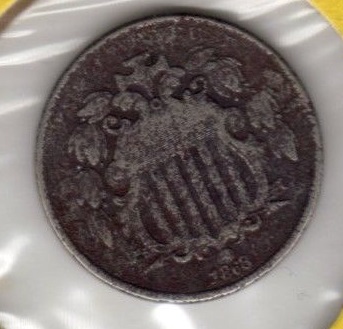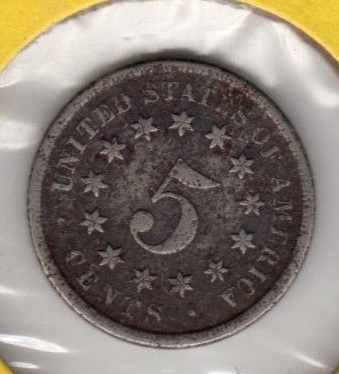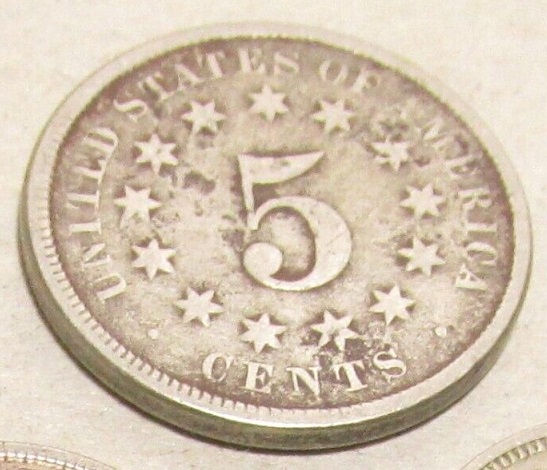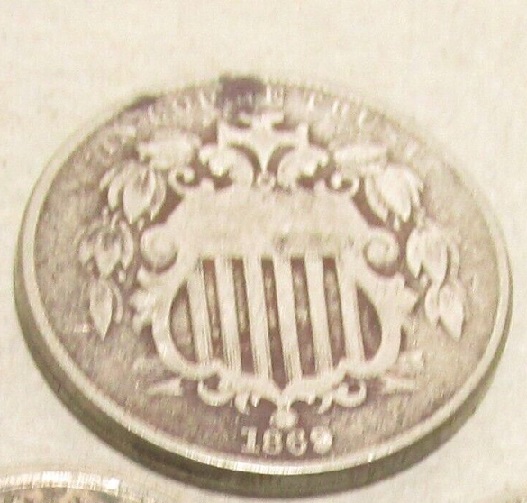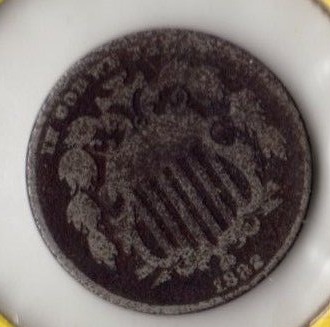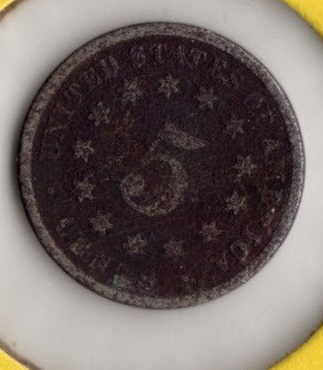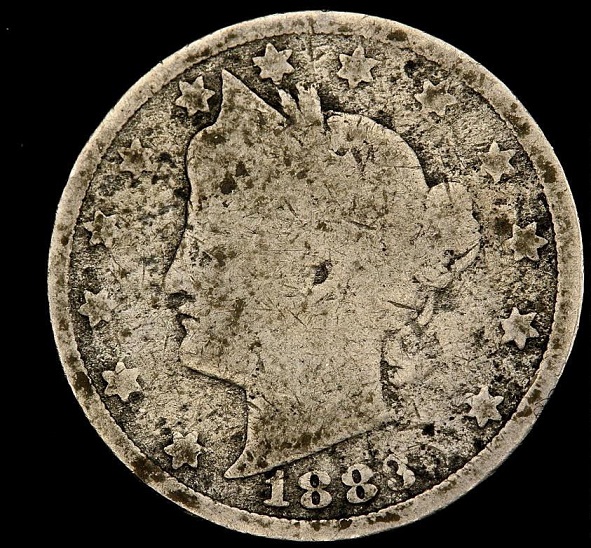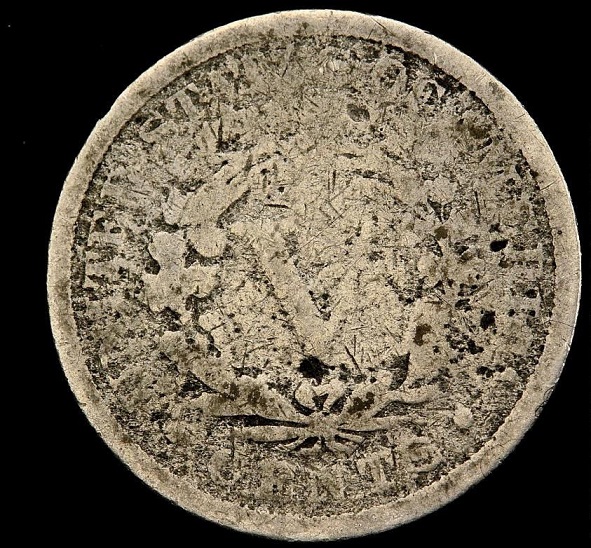Shield Nickel (1866-1883)
Like the three-cent piece introduced the year before, the copper-nickel five-cent piece was created to retire the unpopular fractional currency notes of that value. These had themselves been issued in place of the silver half dime, hoarded since 1862 and never again to play a significant role in circulation.
A homely coin, the Shield Nickel was also proportionally too thick for its diameter, this awkward size resulting from the determination of Congress to have a coin weighing an even five grams. The result was poorly struck coins and rapid die failure. To reduce the rate at which dies cracked and chipped, the U. S. Mint removed the rays from this coin’s reverse in 1867, but the improvement in die life was negligible.
These coins were produced in large numbers from 1866 through 1869, but once the despised fractional notes had been replaced a redundancy of nickels developed, and mintages declined. A high mintage was not achieved again until 1882, by which time a replacement design was already being readied.
Moderately popular with date collectors, the only challenges to completing this series are the proof-only issues of 1877-78 and the low-mintage dates of 1879-81. Proofs of the latter three are more commonly seen than currency strikes.
This series is astonishingly rich in varieties. The rapid failure of dies and the consequent great number of dies needed to produce even modest mintages led to hasty work. The result was a vast array of doubled dies, repunched dates, hub changes and progressive die breaks. Perhaps the most prominent of these varieties are the Reverse of 1868 nickels, the 1869 Narrow Date dies, the several doubled-die obverses of 1872 and the various overdates of 1883. In all likelihood, there are as many or more variety collectors of this series as there are date collectors.
Showing all 4 results
-
1868 Shield Nickel
$1,868.00 -
1882 Shield Nickel
$1,882.00

